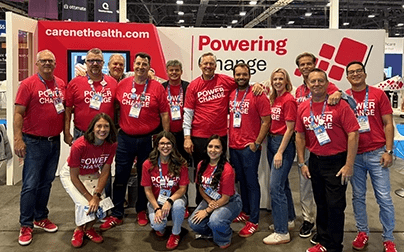
CMS recently released the 2026 MA Star Ratings results. What changed—and what should plan leaders do next? Below, we unpack the results and what they mean for health plan leaders’ strategy moving forward.
What do the 2026 results tell us?
According to HealthScape Advisors, the overall picture stabilized in 2026 after the broad declines seen in 2025—average ratings were essentially flat and the share of members in 4-star-and-above plans held near two-thirds of enrollment. At the same time, 5-star momentum returned: outlet reporting cataloged a sharp increase in top-rated contracts versus last year—see the contract-by-contract rundown in Healthcare Finance News.
Why this matters: maintaining 4-star or higher unlocks quality bonus payments and richer benefits—a competitive advantage that drives meaningful business outcomes and CMS’s methodology has reinforced for years (measure weights and details in the CMS 2025 fact sheet).
How does 2026 compare to 2025?
As RISE reported, 2025 brought fewer 5-star plans and broad pressure at the 4-star threshold as cut points rose. By contrast, the 2026 cycle shows stability and a rebound at the top, with several organizations moving contracts back over 4-stars.
Who were the big winners?
Several carriers achieved notable rebounds in their plan performance. Healthcare Dive highlights that Elevance increased the share of its MA members in 4-star-and-above contracts to about 53% after a key contract improved from 3.5-star to 4.0-star; Centene jumped from roughly 1% to 18% of members in 4-star-and-above plans; UnitedHealthcare maintained a leading position with ~77% of members in 4-star-and-above; and Alignment Healthcare again had 100% of members in 4-star-and-above contracts. For the full set of 5-star contracts by parent organization, Healthcare Finance News has the rollup.
What patterns stand out among 5-star plans?
A few themes continue to separate the leaders:
- Experience and adherence drive the math. CMS’s methodology places heavy weight on CAHPS (4×) and strong emphasis on Part D adherence; high performers consistently excel there. Analyses this season also note recovery in experience signals, which helped some plans regain ground.
- Always-on beats seasonal. Reporting on 2026 stresses consistent, proactive engagement, often automation (IVR/SMS) for scale, paired with human follow-through for nuance, outperforming end-of-year pushes.
- Tighter provider alignment. Leaders, especially integrated or value-based networks, coordinate care, close gaps, and document outcomes more reliably (illustrated in the roster of 5-star contracts summarized by HFN).
What about plans that stalled or declined?
Two key factors drove plan performance challenges:
- Rising cut points that make “good” insufficient without precise execution (RISE 2025).
- Fragmented, burst-mode outreach that struggles to lift CAHPS and adherence versus always-on orchestration.
What are the implications for next year’s strategy?
In practical terms:
- Treat Stars as a 12-month discipline, not a season—especially for CAHPS and adherence, where steady engagement and service-recovery loops matter.
- Automate the baseline; human the exceptions. Use IVR/SMS to drive reach and reminders, and route complexity to live teams.
- Lead with the math. Prioritize high-weight measures first (CAHPS 4×; adherence 3×).
- Tighten provider orchestration—timely gap lists, incentives, and easier scheduling—to avoid last-mile friction.
What can MA plan executives do right now?
Three strategic actions deliver immediate impact:
- Stand up a steady cadence for CAHPS, adherence, and gap closure—avoid “quiet months.”
- Instrument refill/screening reminders via IVR/SMS and warm-transfer exceptions to humans.
- Run pre-CAHPS listening loops and act on service recovery quickly.
These best practices align with the weighted measures, and with additional practical advice recommended by AJMC and CAHPS trend insights from Pareto Intelligence.
How can Carenet help?
Carenet helps plans execute strategy with precision—orchestrated automation for scale, expert human intervention where nuance drives results.
- Automation at scale (IVR/SMS): outreach for refills, screenings, HRAs, appointments, and CAHPS touchpoints—smart-routed to Health Advisors for exceptions and service recovery.
- CAHPS service-recovery loops: rapid outreach to detractors and closed-loop follow-up.
- Medication adherence programs: 90-day conversions, refill nudges, pharmacist callbacks, and mail-order enablement.
- Care-gap closure & HRA completion: data-driven lists, automated reminders, in-home kits, and warm transfers to scheduling.
Fast starts: Stars Automation Readiness Assessment • Stars Planning Kit • Executive Working Session.


